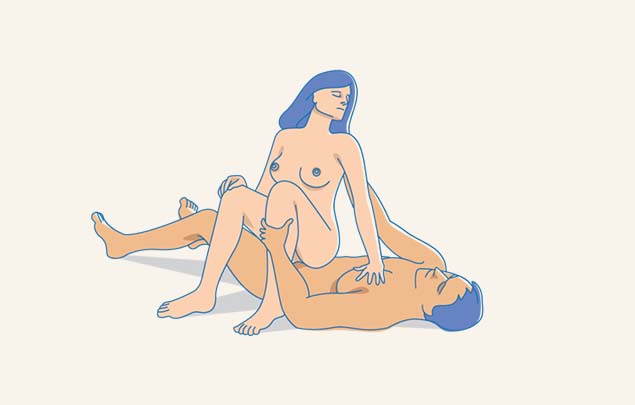The Kamasutra, penned by Vatsyayana, is more than just an ancient Indian text on eroticism. It is a detailed manual on the philosophy of love, human connection, courtship, marriage, and the art of pleasure. Among its most famous sections is the exploration of various sexual positions, which reflect not only physical possibilities but also emotional, psychological, and spiritual dimensions of intimacy.
One such intriguing and physically engaging posture is the Turning Position. Often overlooked in popular interpretations, this position exemplifies a blend of fluid motion, control, mutual pleasure, and adaptability. In this detailed analysis, we’ll dive into its mechanics, symbolism, historical context, benefits, variations, and its relevance in modern intimacy.
Understanding the Turning Position
Definition and Conceptual Basis
The Turning Position, as described in the Kamasutra, involves a transition in roles and orientations during the act of intercourse. It is a dynamic position where either the man or woman rotates or shifts their position, usually during penetration or in the flow of lovemaking, to explore a new angle or sensation. This can involve rotating the bodies partially or fully while remaining connected or during a momentary pause.
In its essence, it’s not just a position but a transition — a graceful movement that symbolizes spontaneity, flexibility, and mutual cooperation between partners.
The Mechanics of the Turning Position
Basic Execution
The Turning Position usually begins from a classic pose like missionary or cowgirl. At a desired moment, one partner (often the woman, as per Vatsyayana’s portrayal of female agency) initiates a turn — perhaps shifting from facing the partner to turning sideways or even reversing into a rear-entry angle. The movement can be sensual, slow, and deliberate, maintaining connection, or can involve a temporary disengagement to reposition.
For example:
- From cowgirl (woman on top), the woman may lift slightly and turn to face away, transitioning to reverse cowgirl.
- From spooning or side-by-side, a partner may twist the torso or hips to bring new contact angles.
- From missionary, a slight turning of the hips can bring about a diagonal or side-angle penetration.
Fluidity in Movement
This position emphasizes fluidity — the gentle unfolding of movement without force or abruptness. It requires strong coordination, mutual rhythm, and sensitivity to each other’s bodies and desires. The movements may include:
- A slow swivel of the hips
- A roll-over from one side to another
- A 180-degree rotation while straddling
- A side-turn for new penetration depth
Historical and Cultural Symbolism
The Turning Position holds symbolic value beyond its physical structure. In ancient Indian philosophy:
Turning represents transformation, change, and progression — all elements essential in a vibrant relationship.
It reflects Shakti, the divine feminine energy that moves, shifts, and reshapes the flow of energy in the universe.
In Tantra, circular and spiral motions are seen as opening channels of kundalini energy, which aligns well with the dynamics of the Turning Position.
Additionally, the Kamasutra suggests that turning movements during intercourse are a sign of adaptability, passion, and mutual respect — a far cry from passive or routine acts.
Psychological and Emotional Significance
Enhancing Intimacy
The act of turning together requires trust and communication. It creates:
- Heightened awareness of each other’s bodies
- Opportunities to read non-verbal cues
- A deeper emotional synchronization
- Shared spontaneity that breaks monotony
Empowering the Woman
Vatsyayana often emphasized female autonomy in sexual encounters. In the Turning Position, when the woman initiates the change, it expresses her agency, desires, and mastery over rhythm — empowering her role as an active partner.
Playfulness and Creativity
The Turning Position invites creativity. Couples can improvise, laugh, explore, and discover what feels good, rather than sticking to rigid scripts. This makes the experience lighter, more fulfilling, and emotionally enriching.
Physical Benefits and Sensual Effects
Exploring New Angles
- The movement allows:
- Deeper penetration in certain positions
- Stimulation of different erogenous zones (e.g., G-spot, perineum)
- Variability in clitoral contact
Preventing Fatigue
Holding one position for too long can be physically exhausting. The Turning Position introduces motion, allowing both partners to shift weight, stretch, and refresh without interrupting the connection.
Enhancing Sensory Experience
The process of turning can heighten sensations through:
- Skin sliding across skin
- Changing pressure points
- Exciting anticipation of the next movement
Variations of the Turning Position
The Swirl Turn
The woman, on top, slowly swirls her hips in a circular motion while turning to face away, transitioning to reverse cowgirl — stimulating both partners in multiple ways.
The Side Slide Turn
Starting in missionary, the woman shifts her hips sideways while raising one leg, allowing the man to turn slightly and enter from a diagonal position. This angle stimulates the inner vaginal walls and provides intense pleasure.
The Over-the-Shoulder Turn
From rear-entry or doggy style, the woman turns her head and shoulders toward her partner while arching back — a powerful position that allows eye contact, neck kisses, and emotional reconnection during a raw physical posture.
The Roll-over Turn
While in a side-by-side position, both partners roll in unison, turning over until one is on top. This is playful and often leads to laughter, surprise, or sensual dominance shifts.
Tantric Perspectives on Turning
In Tantra, the motion of turning aligns with kundalini awakening, where the serpent energy rises and coils through the chakras. The spiral and circular movements of the hips during turning mirror the spiral journey of this energy. Tantric sex teaches that:
- Circular pelvic movements awaken sacral chakra energy
- Turning motion awakens sexual fire and distributes it across the body
- Eye contact during turning enhances third-eye energy connection
- Turning becomes more than physical—it’s an act of energetic union.
Practical Tips for Mastering the Turning Position
Communication is Key
Discuss comfort levels, rhythm, and signs for when one wants to turn. Silent cues like hand pressure or eye contact often work best.
Strength and Flexibility
Engage in regular exercises like yoga or Pilates to increase body awareness and flexibility. Poses like spinal twists, hip circles, and core work help prepare the body for turning moves.
Use of Lubrication
Smooth transitions are aided by good lubrication. It prevents friction, especially during angular changes.
Timing the Turn
Timing is essential — neither too soon (before arousal peaks) nor too late (when fatigue sets in). Let the energy of the moment guide the shift.
Pillows and Props
Use cushions under hips or knees to support body alignment and ease of motion during turns.
Challenges and How to Overcome Them
Misalignment During Turn
This can cause discomfort. Solution: Pause briefly, reposition, and resume with a gentler rhythm.
Awkward Timing
Turning at the wrong moment can kill the mood. Solution: Build rhythm, allow anticipation, and turn during natural peaks or pauses.
Physical Constraints
Not everyone has the same flexibility. Solution: Adjust the range of motion, try micro-turns, or let one partner remain static while the other turns gently.
The Turning Position in Long-term Relationships
Over time, sexual patterns can become routine. The Turning Position serves as a powerful metaphor and practice for:
- Reinventing intimacy
- Keeping the sexual experience fresh
- Reconnecting through spontaneity
- Acknowledging that pleasure evolves over time
- Couples who engage in this practice regularly report enhanced emotional bonding and satisfaction.
Artistic and Literary References
In classical Indian art and temple carvings — particularly in Khajuraho and Konark — figures are depicted in turning postures, their bodies twisted in beautiful spirals, mid-act, reflecting divine pleasure.
Poetry from the Sangam period and medieval Sanskrit literature also refer to lovers who twist, turn, and entwine like vines — vivid metaphors for the Turning Position.
The Modern Relevance of the Turning Position
In today’s world, where sexual expression is both more open and more complex, the Turning Position offers:
- A return to natural rhythm
- Liberation from rigid scripts
- The joy of co-created pleasure
- Its adaptability makes it suitable for various body types, ages, and preferences.
Couples today, regardless of gender or orientation, can interpret and apply the concept to fit their needs. It represents freedom, play, and mutual exploration — the very core of modern, conscious intimacy.




